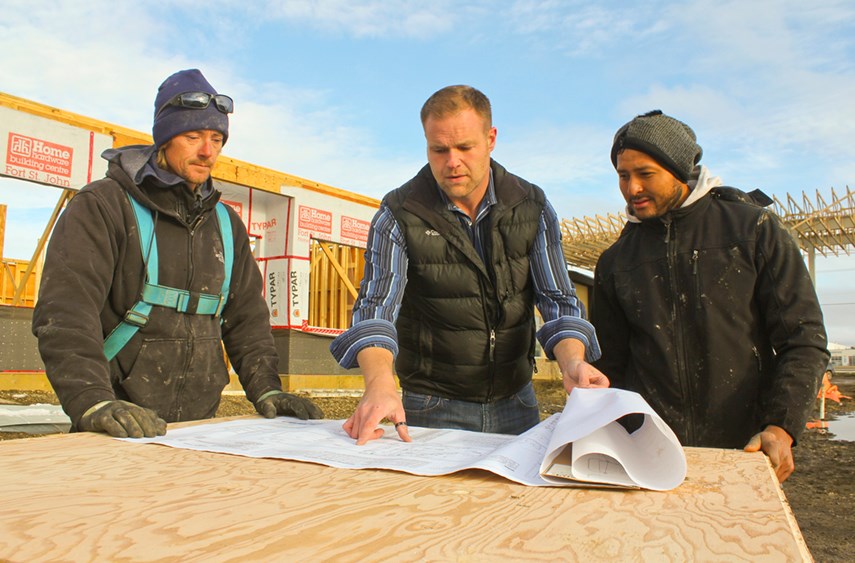In its first major energy policy decision, the federal Liberal government has finally said “yes” to the Pacific NorthWest LNG project – a decision that could have a far-reaching effect on northeast and northwest B.C.
At a Richmond B.C. news conference September 27, Environment Minister Catherine McKenna, Natural Resources Minister Jim Carrand Dominic LeBlanc, minister of fisheries and oceans, announced the Petronas-led project could move forward with conditions to mitigate its environmental impact.
The $11.4 billion export facility, slated for Lelu Island just outside Prince Rupert, would process natural gas from the Montney gas fields in northeast B.C. for shipment to Asia.
It would include a 900-kilometre natural gas pipeline from Progress Energy holdings in the northeast to the province’s northwest coast.
There are nearly 20 proposals to refine and ship B.C.’s natural gas to Asia, but Pacific NorthWest is considered the front-runner.
Industry experts expect Petronas will wait until 2017 before making a final investment decision, which would mean the new plant would start producing liquified natual gas (LNG) around 2021 – when the current LNG glut is expected to balance out with the longer term gradual increase in demand in Asia.
“The window of opportunity earlier on was missed,” said Jihad Traya, manager of natural gas consulting, Solomon Associates in Calgary. “Petronas is looking at the next phase. They’re not looking at prices today – they’re looking at prices tomorrow.”
As of press time, the price of natural gas was bouncing above US$3.00, the highest level in more than a year.
Petronas has already invested billions in PNW LNG. It acquired Alberta’s Progress Energy in 2014 for $5.5 billion and spent billions more acquiring and building natural gas assets in northeastern B.C.
Last year, former Progress Energy and PNW LNG president Michael Culbert said the company had been spending roughly $2 billion a year. Petronas’ 2015 annual financial report cites its Canadian project as still “underway.” Its most recent financial statements, however, show a 23 per cent revenue drop in 2016’s first half compared with 2015’s first half and a 26 per cent decrease in cash flows.
Environmental groups and some First Nations criticized the government’s decision to approve the project.
The federal approval is historic for northeast B.C. because it will allow the province to sell its gas on the world market, where it commands higher prices.
The news comes at a time when the northeast is struggling with high unemployment and surging employment insurance claims.
Kristi Leer, who runs a company that provides traffic control services in the region, said she was “jumping up and down for joy” after hearing the government green-lit the project.
Leer lives in Fort Nelson, a community that’s been among the hardest hit by the oil and gas downturn. Fort Nelson has lost nearly a fifth of its population during the latest downturn, according to estimates from the regional municipality.
An LNG export industry would stabilize the local economy, Leer said.
“It gives them something to start working towards,” Leer said of what the decision means for unemployed people in her community. “Who would work on an LNG career if LNG isn’t even possible for Canada? That alone will give a lot of people great hope.”
Alan Yu, a campaigner with Fort St. John for LNG who programmed radios for the oilpatch before being laid off, said the government’s “yes” gave him reason for hope.
“The reason I moved to Fort St. John a little over a year ago was because of LNG,” he said. “My family is here; we decided to settle here. Without LNG, we might have to move out.”
When upstream drilling investments are taken into account, Petronas said it plans to spend as much as $36 billion on Pacific NorthWest, if the company decides to proceed.
Whether Pacific NorthWest LNG will make its decision before the next provincial election, set for May 2017, remains to be seen.
If the project does not move forward, Dawson Creek Chamber of Commerce executive director Kathleen Connolly said producers would have to find other outlets for B.C. gas.
“The devil really will be in the details and what those conditions look like,” she said. “If you’ve been paying attention to (Enbridge) buying pipe in the ground or TransCanada looking at buying a pipe from New York to Mexico, that tells me that they’re not looking at the West Coast as a viable option in the next two to five years. They’re going to push all that natural gas down to the Gulf.”
It’s likely the Petronas project will see resistance from environmental and some First Nations groups.
Christy Clark’s BC Liberal government noted LNG would help Asian countries transition from dirtier coal-fired electricity.
Next up: decision on oil pipelines
The next decisions for Justin Trudeau’s Liberals is approval of oil pipelines, such as the Trans MountainExpansion Project that would bring more oil from the Alberta oilsands to Lower Mainland ports, and the long-delayed Enbridge Northern Gateway pipeline from Alberta to the port at Kitimat on the northwest coast.



